Minds On
Caribou in Canada
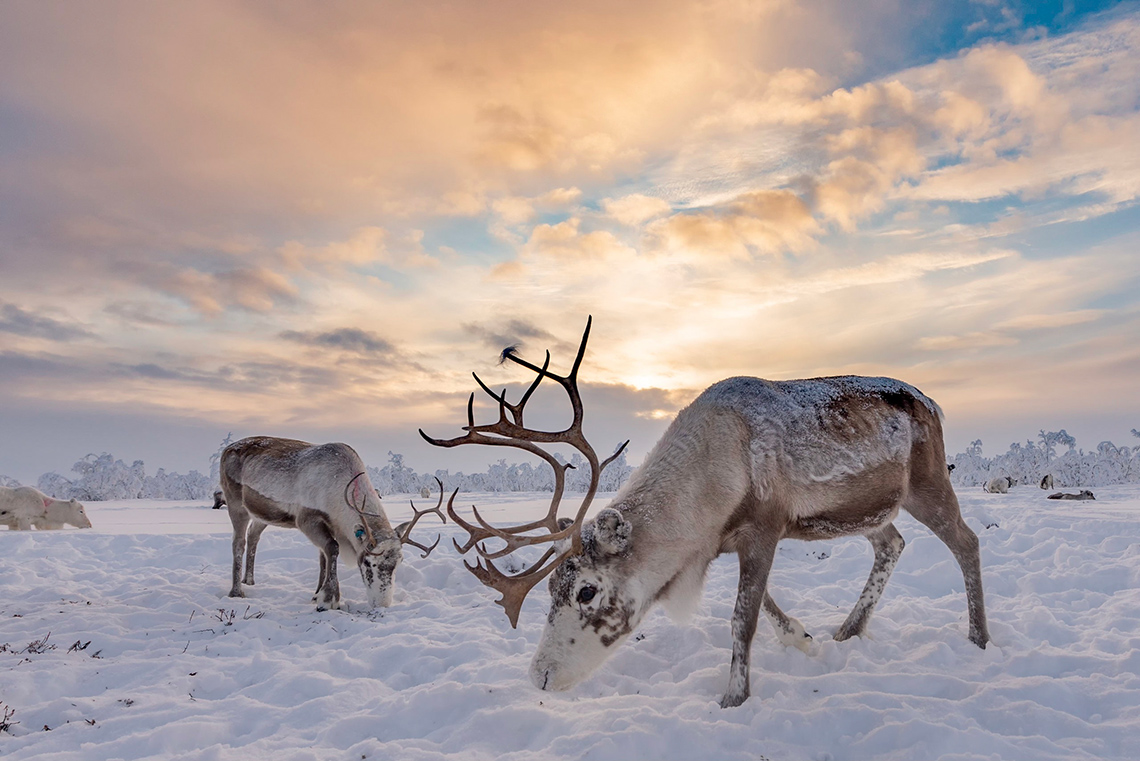
Caribou are found across northern Canada and into the Arctic.
The word caribou is from the Mi’kmaq word qalipu, which means “snow shoveller”. The word was chosen because of the way the caribou push away the snow to find food in the winter. Their fur is very warm which means they can live comfortably in the far north.
Another common name for caribou is reindeer! Have you used either the word caribou or reindeer before?
Did You Know?
Check it out!
Explore the following video to check out some caribou in action!
Reindeer, Rein-don’t
What do you already know about caribou, or reindeer?
Let’s play a game called “Reindeer, Rein-don’t.”
Explore the following reindeer facts and select either “yes” or “no” for each.
Reindeer, rein-don't
|
Is a caribou a reindeer? What do you think? |
||
|
Reindeer females and males both have antlers. |
||
|
Reindeer migrate to Florida in the winter. |
||
|
Reindeer have hollow fur which helps trap heat to keep them warm. |
Now, let’s find out how Lucas did in a game of “Reindeer, Rein-don’t!”
Check out the following video entitled “That TVOKids Show: Reindeer 101” to learn more about caribou.
Student Success
Share my findings
Using a method of your choice, record two new facts that you’ve learned about caribou that will help someone learn more about this animal.
If possible, share with someone who might not know very much about caribou.
Note to teachers: See your teacher guide for collaboration tools, ideas and suggestions.
Action
Caribou bodies
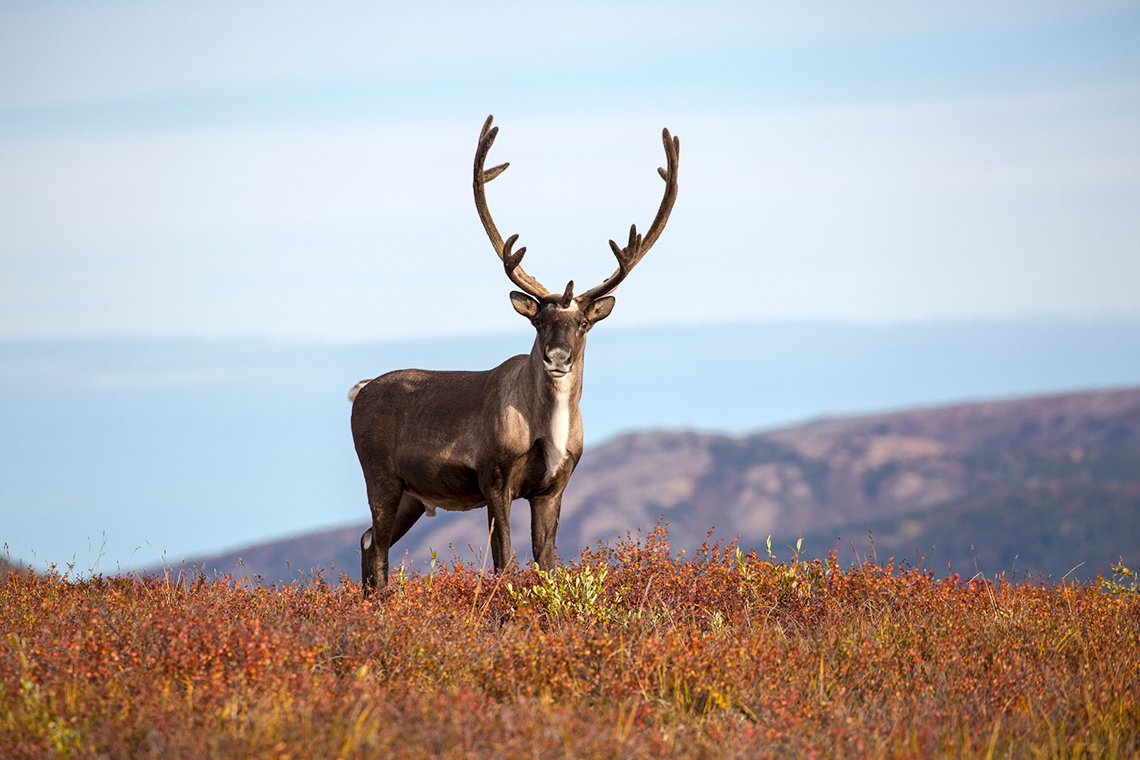
Caribou have antlers that they use to shovel snow and scrape lichen off the rocks so they can eat it.
They have wide hooves to help them travel over the deep snow, and they have warm fur to keep them comfortable in the far north.
Press the ‘Lichen’ button to find out more about this term.
Lichen is a substance that grows on rocks and trees.
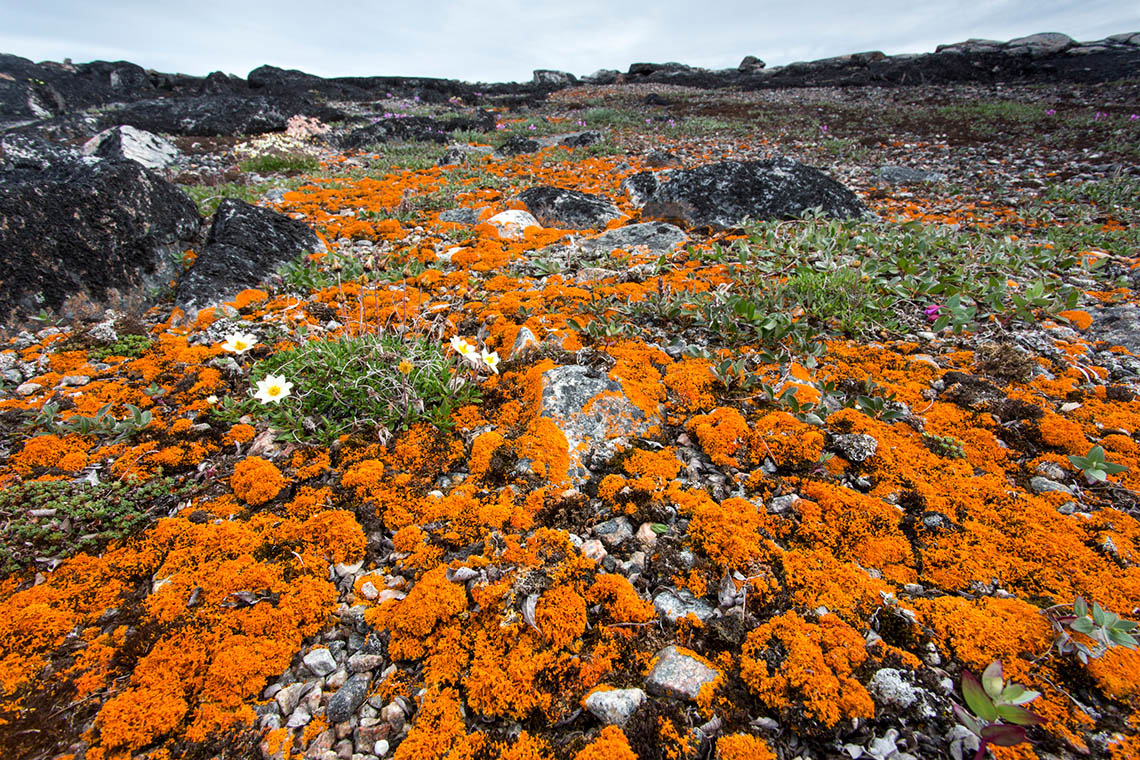
Check out the following parts of a caribou.
Can you label each part?
Pause and Reflect
Pause and reflect
How do the caribou use these body parts to survive in their natural environment?
Record your answer on paper, on the computer, in a recording, or in a method of your choice.
A map with a mystery
The Slate Islands in Lake Superior are 12 kilometers from the nearest town of Terrace Bay.

Pause and Reflect
Pause and reflect
How could a caribou travel to an island?
Would a caribou travel by…
The Great Lakes don’t usually freeze over, except on the edges where the water is shallow.
Cold temperatures can turn liquid water into solid water, or ice. The freezing of water can help animals travel from one place to another when they normally could not.
In 1907 a part of Lake Superior froze to create a bridge of ice. The Woodland Caribou could walk across the lake to settle in on the island.
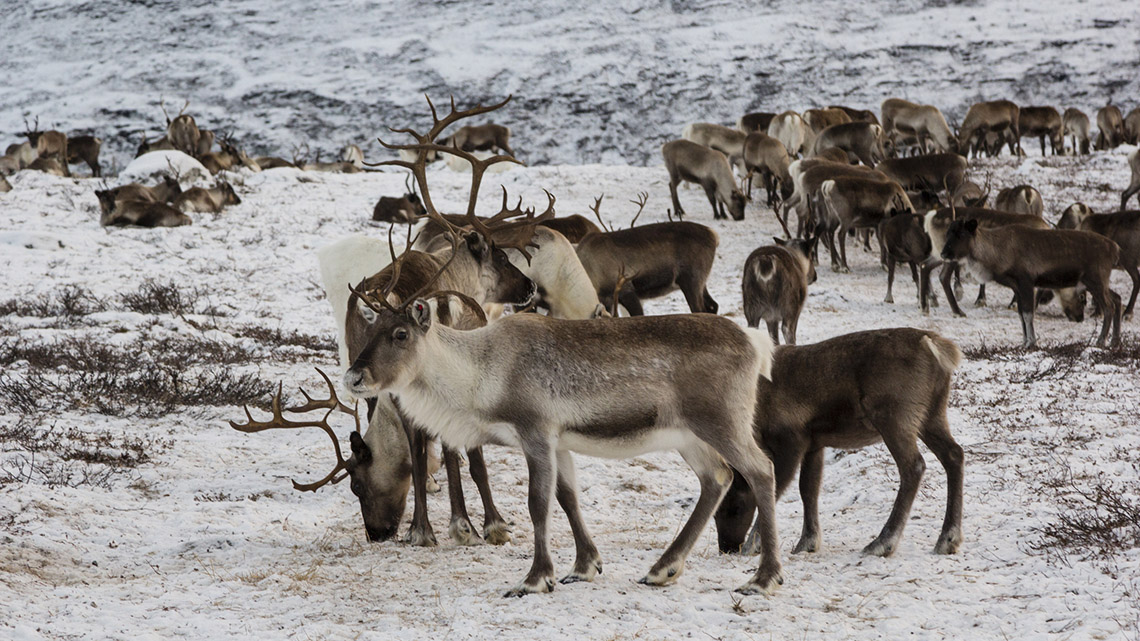
When the ice melted, the caribou stayed.
Since then, when the water is frozen, caribou can come across to the Slate Islands, and many stay. This group that has stayed have become their own family of caribou known as the Slate Island Caribou.
Pause and Reflect
Pause and reflect
How do the caribou in this area depend on the water of Lake Superior?
Record your answer on the computer, on paper, in a recording, or in a method of your choice.
The magic of island living
When the caribou were choosing a home, which of the following would they consider?
The caribou might consider…
Caribou are shy but might be curious about human visitors to the island. There are no predators on the island, and there is no way for predators to arrive. This means that the caribou live a comfortable life there with all of their needs met. The island includes the foods they eat: lichen, leaves, mushrooms, berries, and other plants. The Slate Islands have been a protected place for caribou to live without the fear of predators like bear or wolves.
Pause and Reflect
Close up with a caribou!
Let’s explore caribou with Ontario Parks researchers!
Access the following video from Ontario Parks.
This video shows Woodland Caribou in the Wabakimi Provincial Park.
Queen’s Printer for Ontario, 2020. Reproduced with permission.
What did you notice about the caribou? Where was it? How did it move?
Record your answer in a method of your choice.
Changing climate
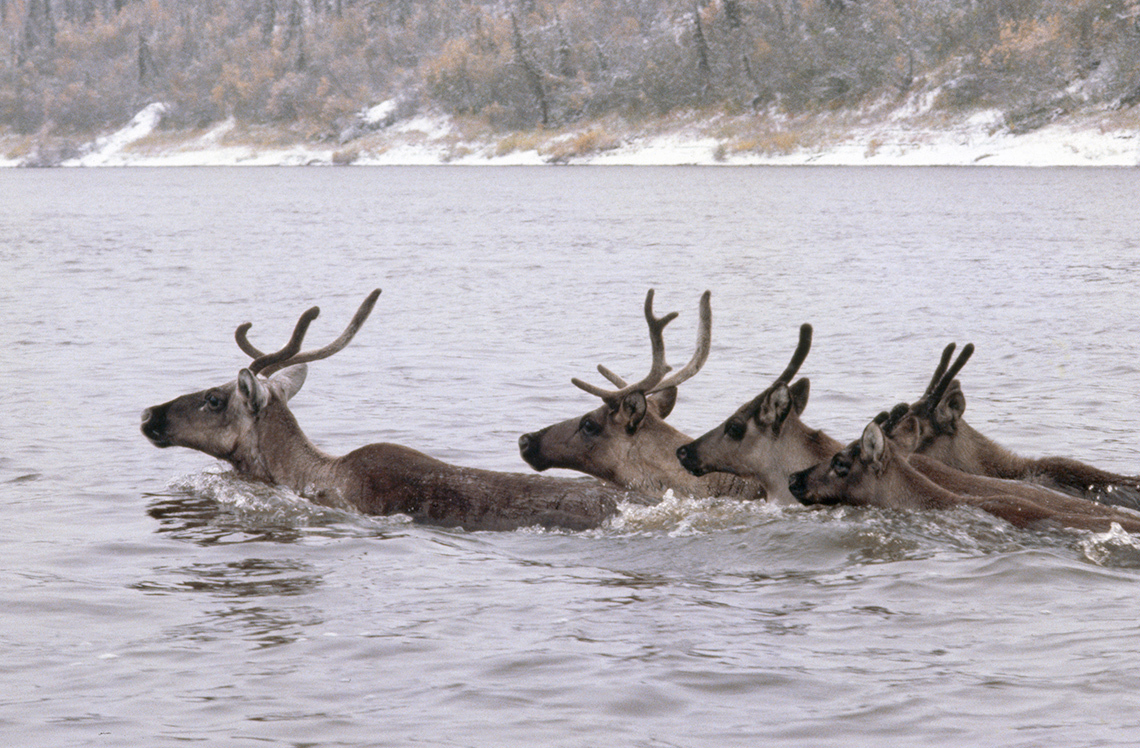
As the climate changes, the patterns of ice freezing and thawing changes, as well as which plants grow well in different locations.
In the following video, there are wolf tracks across the frozen water. This means that as climate changes, wolves have been able to come to the Slate Islands across the ice. Wolves are predators of caribou.
Scientific researchers are using the Slate Islands as a living workshop to study the population of caribou in a small setting.
The researchers have also learned from the knowledge about the caribou behaviours and changing populations from the local First Nation community of Michipicoten, who have lived in and observed the changes in the area for as long as can be remembered.
The Slate Islands are a special place for the caribou. Their populations need to be protected against climate change and predators so that they can continue to not only survive but also thrive in their island environment.
Pause and Reflect
Pause and reflect
What might researchers want to know about the caribou and changes to the climate?
What is one question that researchers can ask the First Nation community of Michipicoten about the caribou that live in that area?
Record your answers in a method of your choice.
Consolidation
Help conduct research
This learning activity connects new and existing approaches for young scientists to create positive changes in their communities.

Parks Ontario and Michipicoten First Nation are studying the population of caribou on the Slate Islands, and they need your help to keep raising awareness about this issue.
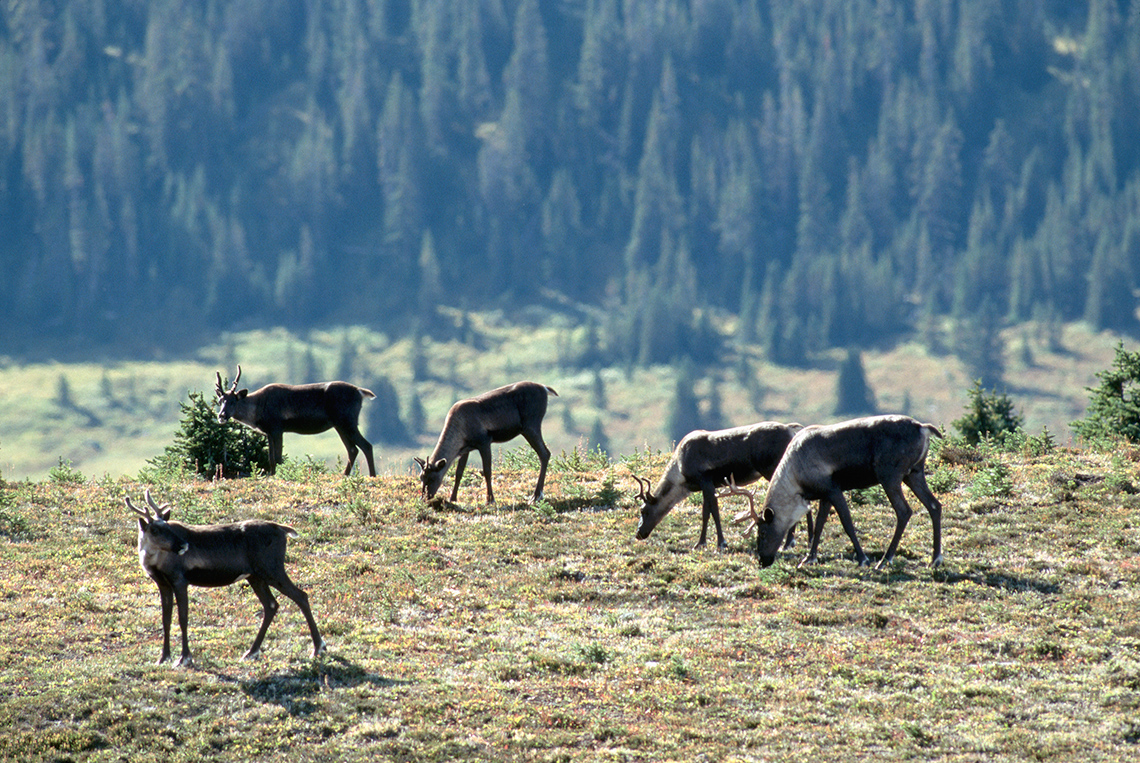
Caribou counting
It is important to gather information about the number of caribou to compare those counts to past and future counts. There used to be almost 600 caribou on the Slate Islands before wolves came across on the ice.
Explore the following image. This image shows the caribou on the Slate Islands.
Help the researchers by counting the caribou that are in the image.

Now that you have explored the image, answer this question:
Why might there be less caribou on Slate Island today then there used to be? Use information you have learned to help you answer this question.
Answer in a method of your choice.
Understanding the ice
Finally, we need to study the temperature compared to past years.
Answer the following question about ice.
Why might the disappearing ice affect the number of caribou on Slate Island?
Record your answer in a method of your choice.
Reflection
How do you feel about what you have learned in this activity? Which of the next four sentences best matches how you are feeling about your learning? Press the button that is beside this sentence.
I feel…
Now, record your ideas about your feelings using a voice recorder, speech-to-text, or writing tool.
Discover MoreDiscover More: Amazing antlers
Female caribou shed their antlers in the spring, or after giving birth. Male caribou shed their antlers in the fall. Researchers can study these antlers for clues about the health of the caribou.
Next, we need to study the health of the antlers. Scientists ask many questions when they observe new things.
Explore the following image. What questions do you have after finding these antlers? Record your questions in a format of your choice.

Use the following checklist to help make a research question.